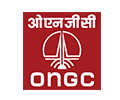Australia Semiconductor Market
Source: The Report Cube
Understand The Key Trends Shaping This Market
Download Free SampleAustralia Semiconductor Market Insights & Analysis
The Australia Semiconductor Market reached a value of nearly USD 2.76 Billion in 2025. The market is assessed to grow at a CAGR of around 4.33%, during the forecast period of 2026-2032 to attain a value of around USD 3.56 Billion in 2032. With a rising reliance on semiconductors across several end-user sectors in Australia, such as healthcare, telecommunications, automotive, and consumer electronics, the industry is destined to expand.
The country’s strategic emphasis on technological advancement, combined with strong regional partnerships & public-private spending, is substantially driving the Australia Semiconductor Market. The nation is undergoing a surge in the acceptance of ceramic materials, like sintered silicon nitride (SSN), reaction bonded silicon nitride (RBSN), and hot pressed silicon nitride (HPSN), specifically in engine components, owing to their resistance to high temperatures.
Moreover, this trend is associated with the great demand for silicon nitride in the automotive & aerospace industries. Also, Australia is progressively introducing advanced semiconductor technologies to cater to domestic needs & support the automotive sector, data centres, and telecommunication sectors, thus this upgrade is contributing in enhancing the Australia Semiconductor Market share.
Furthermore, the rising digitization of industries & the growth of cloud computing infrastructure are fueling semiconductor consumption. Also, companies such as Intel & NVIDIA are providing custom-made chips optimized for data analytics, AI, and automation. Besides, Australia’s proximity & trade relations with South Korea & North America, both foremost semiconductor hubs, are promoting technology transfer & collaborative progression of innovative semiconductors, thus elevating the Australia Semiconductor Industry.
Consequently, the Australia Semiconductor Market is positioned for strong expansion, motivated by technological incorporation, government funding, and increasing demand across varied sectors. Also, with the ongoing innovations in Silicon Nitride Market, the country is predicted to play a vital role in driving the silicon nitride industry. In addition, the constant growth in industries that need semiconductors for engine components & high-temperature operations, including aerospace & automotive, would aid in transforming the outlook of the market during the projected period.
Australia Semiconductor Market Upgrades & Recent Developments
- The Silanna Group, having a headquarters in Australia, declared a new line of advanced analog semiconductors, aiming at high-efficiency power applications among the customer & industrial segments.
- Intel Corporation joined forces with Australian research institutions to develop edge AI chipsets intended for real-time data processing, enhancing capabilities in the automotive & healthcare industries.
- NVIDIA Corporation expanded its presence in Australia by introducing a new data centre GPU platform, optimized for AI & ML operations in enterprise & government applications.
Australia Semiconductor Market Dynamics
-
Driver: Increasing Demand in Automotive & Industrial Sectors to Drive the Market Growth
The nation’s flourishing automotive sector & augmented usage of smart manufacturing tools in industrial setups are driving the demand for high-performance chips & sintered silicon nitride (SSN) in engine components. This, in turn, is elevating the Australia Semiconductor Market demand.
-
Challenge: Limited Domestic Manufacturing Capabilities to Hinder the Expansion
The country currently depends generally on imports for semiconductor components, despite its potential, which raises concerns about supply chain vulnerabilities & limits scalability in the event of global disruptions, thus hampering the market growth.
-
Opportunity: Incorporation of Silicon Nitride in Advanced Applications
There is INCREASING interest in reaction-bonded silicon nitride (RBSN) & hot-pressed silicon nitride (HPSN) for applications needing thermal steadiness & structural strength. Also, this creates new opportunities for the revenue streams, specifically in defense, EVs, and aerospace.
-
Trend: Rising Acceptance of AI-Powered Chips
With the thrive in automation, AI, and IoT, the industries in Australia are observing a shift toward AI-optimized semiconductors. Thus, this trend is predicted to redefine chip design & demand during 2026-32.
Australia Semiconductor Market Segment-Wise Analysis
By Components:
- Memory devices
- Logic devices
- Analog IC
- MPU
- Discrete power devices
- MCU
- Sensors
- Others
The Logic Devices components capture the biggest share of the Australia Semiconductor Market and are predicted to follow the same trend during the forecast period as well. These devices are necessary for control, communication, and computer applications. Logic circuits, primarily microprocessors & application-specific integrated circuits (ASICs), are becoming more & more vital as industries embrace improved automation, robotics, and artificial intelligence (AI) capabilities.
Moreover, the expansion of edge computing & AI-powered gadgets is inspiring chipmakers to invest in high-performance, low-power logic devices, which would aid the market to grow even more. Also, operational chip performance depends on dependable & heat-resistant substrates, which is why this demand is diligently connected to the progression of the silicon nitride industry.
By End Use:
- Automotive
- Industrial
- Data Centre
- Telecommunication
- Consumer Electronics
- Aerospace & Defense
- Healthcare
- Others
The Consumer Electronics segment is dominating the Australia Semiconductor Market, by grabbing the potential market share in recent years. The requirement for chips is being fueled by the rapid adoption of wearable technology, cellphones, game consoles, and smart home items. As a result of customer demand for gadgets that are fast, energy-efficient, and small, producers are integrating progressively sophisticated semiconductor technologies.
Also, propelling research & chip developments is driving the prevalence of 5G technology & ultra-HD streaming. Further, as ceramic materials & raw materials such as silicon nitride are gradually utilized in chip production to guarantee endurance & performance under high temperatures, mainly in small devices, the demand is further elevated.
What Does Our Australia Semiconductor Market Research Study Entail?
- The Australia Semiconductor Market Research Report highlights the forecast growth rate (CAGR) by anticipating the market size and share.
- The market analysis puts light upon the primary industry trends, driving aspects, potential opportunities, growth challenges, and other major factors.
- The Australia Semiconductor Market Research Report entails details about the most critical shifts in market share in the prominent regions.
- Considering the statistics & the developments by the primary market competitors, our report also strives to demonstrate the most sought-after strategies of the key players.
Table of Contents
- Introduction
- Objective of the study
- Product Definition
- Market Segmentation
- Study Variables
- Research Methodology
- Secondary Data Points
- Companies Interviewed
- Primary Data Points
- Break Down of Primary Interviews
- Secondary Data Points
- Executive Summary
- Market Dynamics
- Drivers
- Challenges
- Opportunity Assessment
- Recent Trends and Developments
- Policy and Regulatory Landscape
- Australia Semiconductor Market Overview (2020-2032)
- Market Size, By Value (in USD Billions)
- Market Share, By Components
- Memory devices
- Logic devices
- Analog IC
- MPU
- Discrete power devices
- MCU
- Sensors
- Others
- Market Share, By End Use
- Automotive
- Industrial
- Data Centre
- Telecommunication
- Consumer Electronics
- Aerospace & Defense
- Healthcare
- Others
- Market Share, By Material Used
- Silicon Carbide
- Gallium Manganese Arsenide
- Copper Indium Gallium Selenide
- Molybdenum Disulfide
- Others
- Market Share, By Competitors
- Competition Characteristics
- Revenue Shares
- Australia Memory devices Semiconductor Market Overview, 2020-2032F
- By Value (USD Million)
- By End Use- Market Size & Forecast 2019-2030, USD Million
- Australia Logic devices Semiconductor Market Overview, 2020-2032F
- By Value (USD Million)
- By End Use- Market Size & Forecast 2019-2030, USD Million
- Australia Analog IC Semiconductor Market Overview, 2020-2032F
- By Value (USD Million)
- By End Use- Market Size & Forecast 2019-2030, USD Million
- Australia MPU Semiconductor Market Overview, 2020-2032F
- By Value (USD Million)
- By End Use- Market Size & Forecast 2019-2030, USD Million
- Australia Discrete power devices Semiconductor Market Overview, 2020-2032F
- By Value (USD Million)
- By End Use- Market Size & Forecast 2019-2030, USD Million
- Australia MCU Semiconductor Market Overview, 2020-2032F
- By Value (USD Million)
- By End Use- Market Size & Forecast 2019-2030, USD Million
- Australia Sensors Semiconductor Market Overview, 2020-2032F
- By Value (USD Million)
- By End Use- Market Size & Forecast 2019-2030, USD Million
- Australia Others Semiconductor Market Overview, 2020-2032F
- By Value (USD Million)
- By End Use- Market Size & Forecast 2019-2030, USD Million
- Competitive Outlook (Company Profile - Partila List)
- The Silanna Group
- Company Overview
- Business Segments
- Strategic Alliances/Partnerships
- Recent Developments
- Intel Corporation
- Company Overview
- Business Segments
- Strategic Alliances/Partnerships
- Recent Developments
- Taiwan Semiconductor Co. Ltd.
- Company Overview
- Business Segments
- Strategic Alliances/Partnerships
- Recent Developments
- NVIDIA Corporation
- Company Overview
- Business Segments
- Strategic Alliances/Partnerships
- Recent Developments
- Others
- Company Overview
- Business Segments
- Strategic Alliances/Partnerships
- Recent Developments
- The Silanna Group
- Contact Us & Disclaimer
List of Figure
Figure 1: Research Methodology Flowchart
Figure 2: Market Segmentation Overview
Figure 3: Breakdown of Primary Interviews by Respondent Type
Figure 4: Market Size of Australia Semiconductor Market (2020-2032) in USD Billions
Figure 5: Market Share by Semiconductor Components (Memory Devices, Logic Devices, Analog IC, MPU, Discrete Power Devices, MCU, Sensors, Others)
Figure 6: Market Share by End Use (Automotive, Industrial, Data Centre, Telecommunication, Consumer Electronics, Aerospace & Defense, Healthcare, Others)
Figure 7: Market Share by Material Used (Silicon Carbide, Gallium Manganese Arsenide, Copper Indium Gallium Selenide, Molybdenum Disulfide, Others)
Figure 8: Competitive Landscape: Revenue Shares of Key Players
Figure 9: Australia Memory Devices Market Size by Value (USD Million)
Figure 10: Australia Memory Devices Market Size by End Use (USD Million)
Figure 11: Australia Logic Devices Market Size by Value (USD Million)
Figure 12: Australia Logic Devices Market Size by End Use (USD Million)
Figure 13: Australia Analog IC Market Size by Value (USD Million)
Figure 14: Australia Analog IC Market Size by End Use (USD Million)
Figure 15: Australia MPU Market Size by Value (USD Million)
Figure 16: Australia MPU Market Size by End Use (USD Million)
Figure 17: Australia Discrete Power Devices Market Size by Value (USD Million)
Figure 18: Australia Discrete Power Devices Market Size by End Use (USD Million)
Figure 19: Australia MCU Market Size by Value (USD Million)
Figure 20: Australia MCU Market Size by End Use (USD Million)
Figure 21: Australia Sensors Market Size by Value (USD Million)
Figure 22: Australia Sensors Market Size by End Use (USD Million)
Figure 23: Australia Others Semiconductor Market Size by Value (USD Million)
Figure 24: Australia Others Semiconductor Market Size by End Use (USD Million)
Figure 25: Company Profile: The Silanna Group - Business Segments & Strategic Alliances
Figure 26: Company Profile: Intel Corporation - Business Segments & Strategic Alliances
Figure 27: Company Profile: Taiwan Semiconductor Co. Ltd. - Business Segments & Strategic Alliances
Figure 28: Company Profile: NVIDIA Corporation - Business Segments & Strategic Alliances
Figure 29: Company Profile: Others - Business Segments & Strategic Alliances
List of Table
Table 1: Objective of the Study
Table 2: Product Definition and Specifications
Table 3: Market Segmentation Criteria
Table 4: Study Variables and Definitions
Table 5: Secondary Data Sources Used
Table 6: Companies Interviewed for Primary Research
Table 7: Primary Data Points Collected
Table 8: Breakdown of Primary Interviews by Respondent Type
Table 9: Key Market Drivers for Australia Semiconductor Market
Table 10: Challenges in the Semiconductor Market
Table 11: Opportunity Assessment Summary
Table 12: Recent Trends and Developments in the Semiconductor Industry
Table 13: Policy and Regulatory Landscape Overview
Table 14: Australia Semiconductor Market Size Forecast (2020-2032), by Value (USD Billions)
Table 15: Market Share by Semiconductor Components (Memory Devices, Logic Devices, etc.)
Table 16: Market Share by End Use Segment
Table 17: Market Share by Material Used
Table 18: Competitive Landscape: Revenue Shares of Leading Companies
Table 19: Australia Memory Devices Semiconductor Market - By Value (USD Million)
Table 20: Australia Memory Devices Semiconductor Market - By End Use (USD Million)
Table 21: Australia Logic Devices Semiconductor Market - By Value (USD Million)
Table 22: Australia Logic Devices Semiconductor Market - By End Use (USD Million)
Table 23: Australia Analog IC Semiconductor Market - By Value (USD Million)
Table 24: Australia Analog IC Semiconductor Market - By End Use (USD Million)
Table 25: Australia MPU Semiconductor Market - By Value (USD Million)
Table 26: Australia MPU Semiconductor Market - By End Use (USD Million)
Table 27: Australia Discrete Power Devices Market - By Value (USD Million)
Table 28: Australia Discrete Power Devices Market - By End Use (USD Million)
Table 29: Australia MCU Semiconductor Market - By Value (USD Million)
Table 30: Australia MCU Semiconductor Market - By End Use (USD Million)
Table 31: Australia Sensors Semiconductor Market - By Value (USD Million)
Table 32: Australia Sensors Semiconductor Market - By End Use (USD Million)
Table 33: Australia Others Semiconductor Market - By Value (USD Million)
Table 34: Australia Others Semiconductor Market - By End Use (USD Million)
Table 35: Company Profile Summary: The Silanna Group
Table 36: Company Profile Summary: Intel Corporation
Table 37: Company Profile Summary: Taiwan Semiconductor Co. Ltd.
Table 38: Company Profile Summary: NVIDIA Corporation
Table 39: Company Profile Summary: Other Key Players
Top Key Players & Market Share Outlook
- The Silanna Group
- Intel Corporation
- Taiwan Semiconductor Co. Ltd.
- NVIDIA Corporation
- Others
Frequently Asked Questions








